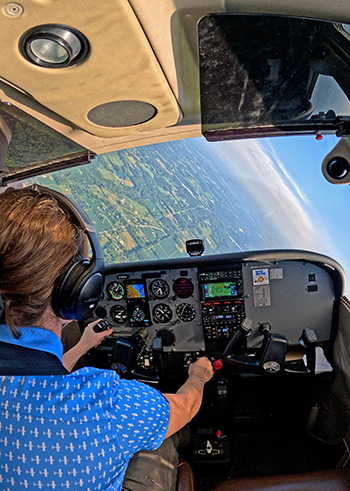Subscriber question:
"Can you please explain cross-control stalls? They don't even demonstrate them in civilian pilot training." —Anonymous
Wally:
 “You are correct. The U.S. only requires CFI applicants to train and test on cross-control stalls. Sort of remarkable, since this is the stall that often causes the low-altitude stall-spin accident we all read about. A cross-control stall is a stall while turning and either skidding or slipping.
“You are correct. The U.S. only requires CFI applicants to train and test on cross-control stalls. Sort of remarkable, since this is the stall that often causes the low-altitude stall-spin accident we all read about. A cross-control stall is a stall while turning and either skidding or slipping.
The most dangerous situation is a stall in a turn with excessive bottom rudder. If we’re turning left, the airplane is banked left, the left rudder pedal is lower, so that’s the bottom rudder. When coordinated, that’s not an issue at all. However, if the pilot uses excessive bottom (left) rudder, the left (lower) wing is slowed and experiences an increased angle of attack. The right (higher) wing is accelerated and experiences a reduced angle of attack. The lower, left wing stalls first, the aircraft rotates to the left, and the nose drops.
The natural pilot reaction is pulling back on the yoke and applying right aileron—both of which are incorrect—and the aircraft continues to rotate, progresses deeper into the stall, and may enter a spin. The results can be disastrous close to the ground.
The proper action is applying forward elevator, neutral aileron, and opposite rudder. Of course, the real solution is to not make a cross-control stall in the first place. The Airplane Flying Handbook describes the cross-control stall as a stall from a skidding turn.
You can perform a cross-control stall from a slipping turn, but that’s not as dangerous. A slipping turn would be excessive top rudder. The top wing stalls first, which effectively levels the wings. This presents a much more normal picture to the pilot and almost acts as an automatic recovery system.
Cross-controlled stalls can be performed safely at altitude. I believe the experience is beneficial for all pilots. Find an experienced instructor and learn the difference between a stall from a skidding turn and one from a slipping turn. You’ll understand why it’s dangerous to increase turn rate with the rudder alone, but not so dangerous to slip during landing.”

